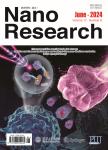Engineering hyaluronic acid-based nanoassemblies for monoclonal antibody delivery-design,characterization,and biological insights
作者机构:Center for Research in Molecular Medicine and Chronic Diseases(CiMUS)University of Santiago de CompostelaSantiago de Compostela 15782Spain Department of PharmacologyPharmacy and Pharmaceutical TechnologySchool of PharmacyUniversity of Santiago de CompostelaSantiago de Compostela 15782Spain Health Research Institute of Santiago de Compostela(IDIS)Santiago de Compostela 15782Spain State Key Laboratory of Quality Research in Chinese MedicineInstitute of Chinese Medical Sciences(ICMS)University of MacaoMacao 999078China Polymer Therapeutics Laboratory and CIBERONC Prince Felipe Research CentreValencia E-46012Spain Structure and Cell Biology of Viruses LabCIC bioGUNEBasque Research and Technology Alliance(BRTA)Derio 48160Spain ALBA Synchrotron Light SourceExperiments DivisionCerdanyola del VallèsBarcelona 08290Spain IKERBASQUEBasque Foundation for ScienceBilbao 48009Spain
出 版 物:《Nano Research》 (纳米研究(英文版))
年 卷 期:2024年第17卷第10期
页 面:9111-9125页
核心收录:
学科分类:081704[工学-应用化学] 07[理学] 08[工学] 0817[工学-化学工程与技术] 070303[理学-有机化学] 0703[理学-化学]
基 金:supported by the government of Xunta de Galicia(Competitive Reference Groups,Consellería de Educación e Ordenación Universitaria,Xunta de Galicia,No.ED431C 2021/17) by the ISCⅢ thorough AES 2020,Award No.AC20/00028 and within the framework of EuroNanoMed Ⅲ part of the project Proof of Concept(No.PDC2021-120929-I00) financed by the Spanish Ministry of Science and Innovation-AEI/10.13039/501100011033 the European Union NextGenerationEU/PRTR the Spanish Ministry of Science,Innovation and Universities(No.FPU18/00095)
主 题:monoclonal antibody nanoparticles hyaluronic acid characterization particle size computational modeling
摘 要:The current spotlight of cancer therapeutics is shifting towards personalized medicine with the widespread use of monoclonal antibodies(mAbs).Despite their increasing potential,mAbs have an intrinsic limitation related to their inability to cross cell membranes and reach intracellular *** offers promising solutions to overcome this limitation,however,formulation challenges *** challenges are the limited loading capacity(often insufficient to achieve clinical dosing),the complex formulation methods,and the insufficient characterization of mAb-loaded ***,we present a new nanocarrier consisting of hyaluronic acid-based nanoassemblies(HANAs)specifically designed to entrap mAbs with a high efficiency and an outstanding loading capacity(50%,w/w).HANAs composed by an mAb,modified HA and phosphatidylcholine(PC)resulted in sizes of~100 nm and neutral surface *** modeling identified the principal factors governing the high affinity of mAbs with the amphiphilic HA and *** composition and structural configuration were analyzed using the orthogonal techniques cryogenic transmission electron microscopy(cryo-TEM),asymmetrical flow field-flow fractionation(AF4),and small-angle X-ray scattering(SAXS).These techniques provided evidence of the formation of core-shell nanostructures comprising an aqueous core surrounded by a bilayer consisting of phospholipids and amphiphilic *** vitro experiments in cancer cell lines and macrophages confirmed HANAs’low toxicity and ability to transport mAbs to the intracellular *** reproducibility of this assembling process at industrial-scale batch sizes and the long-term stability was *** conclusion,these results underscore the suitability of HANAs technology to load and deliver biologicals,which holds promise for future clinical translation.



